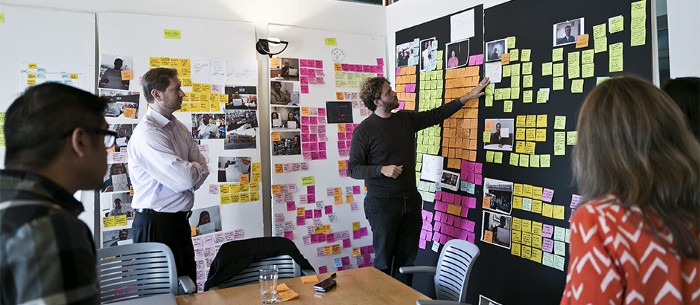
While both approaches are anchored on empathy and humanity, human-centered design is now becoming the preferred approach of our age; because it hinges on the ultimate motivator for every solution- the user!
Design is creative problem-solving. It has to be so powerful that it not just solves a problem but at some level starts a whole new trend or simply change the way the world does something.
Globally, designers are now recognizing this more than ever and this awareness has helped change the course of the creative process. As a result, it has brought two prominent design proposition to the forefront- one, being the traditional community-centric design and two; the organic approach termed as human-centric design.
The motive for both however remains the same, that is, to improve creative problem-solving capabilities and achieve the desired outcome. These design methodologies also justify the rise and reach of user experience (UX) in the last couple of decades. This evolution in design thinking also goes on to prove that how important the end-user (read consumer) has become. Therefore, today user is at the center of every design research as well as its outcome.
Before moving on to understand the workings of these design approaches and which application suits your design requirement best, let’s delve a little deeper into these two design methodologies:
i) Community-Centered Design (CCD) is all about people. Based on the power of communities, the design and creative solutions are derived from the power of perception and behavior of people towards a certain belief, product or services. Complex and intractable situations are deciphered using design ideologies derived from how people as a group perceive it, and not from experts or past data as it was traditionally done.
ii) Human-Centered Design (HCD) is a definitive problem-solving approach that creates design-led solutions to complex problems by including individual perspectives at every step of the design ideation and problem solving. This solution relies heavily on singular understanding of how an individual user reacts to very specific problem.
The Difference
Both the approaches are same, the motive — similar too, and overlaps in theory — many. However, the only stark difference in today’s scenario is the person vs people approach. While for human-centered design, one person and his personal experience acts as a motivator, for the community-centered design unanimous behavior of a large group of people is factored in. Design practitioners believe, this difference is what makes the latter a slightly less empathetic approach.

In reality, the use of human vs community centered design approaches relies on the problem at hand. Having said that, human centered is the preferred methodology of our age and has preceded community-centered purely because of the superior user experience. Now let’s understand these approaches in unison and in details.
The Return of Empathy
Unlike before when design solutions were drawn using data and metrics, there is more empathy, understanding and humanity involved in every step of the design process today. Human centered design in particular, and community centered design at large, have starting putting people at the center of product, creative and systems design. This immersive approach enables empathy and a clear understanding of where the problem truly lies. And that in turn enables insights that help deliver breakthrough solutions and targeted responses.
How Empathy Helps?
There is no denying that coming up with creative solutions that centers around human behavior should be the motive behind any design exercise. Fortunately, the application of human-centered design thinking takes this experience a notch higher. The main differentiator in solutions that are conceived out of human-centered design approach from the ones that are not is the exceptional customer experience, the immediate human resonance and the customer-first approach.
Method to the Madness
Human centered design process, while reliant entirely on human psychology and behavior, has its own set of rules and progression metrics. There are three distinct phases, which though overlaps, is significant in isolation as well. The 3 phases are Inspiration, Ideation and Implementation.
– Inspiration: All the ground work happens here. Once the problem statement is defined and the designers understand what the exact requirement is, the ’inspiration’ phase starts. In this phase the lives of the people for whom the solutions are devised is closely studied and documented. This can be done via observation, interviews, vox-pops, surveys or by understanding their lifestyle.
– Ideation: The data collected from the inspiration phase gets pruned and purposed at this stage. In this reflective stage prototypes are generated and tentative solutions are tested.
– Implementation: This is where the change starts. The solution gets implemented in real-time and is introduced to the same set of people, who were studied during the inspiration phase.
All in all
Human-centered design is a true testament of how design-thinking has come of age. But then, design evolves and so do users, which is why it is not just enough to put communities and humans at the middle of our process and outcome. It is about time we brought together the best of both and focused on human-centered communities. All said and done, User is the order of the day and creative solutions that caters to real needs are the real deal!
P.S. Original articles Published on December 16, 2019 on medium
https://medium.com/@vijayvsocial/human-centered-design-vs-community-centered-design-e24957b40ee7
